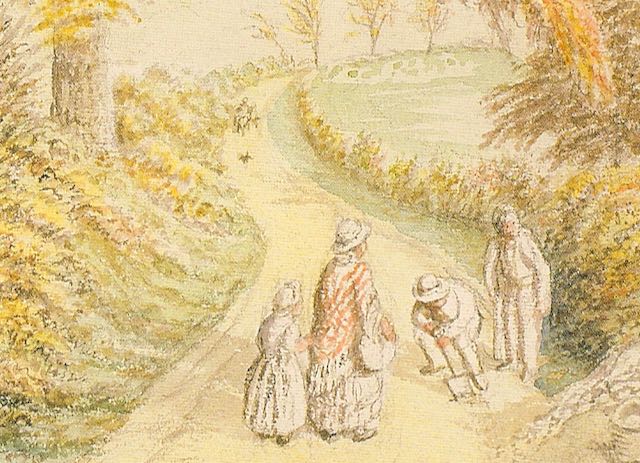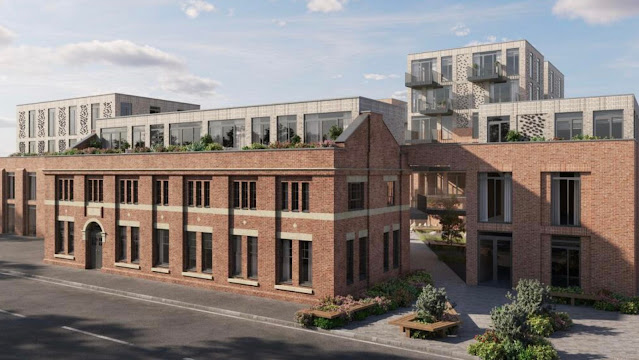Last week's blog was about Camp Field, which became Campfield Road, and given that a query was raised by a reader about the origin of the word Camp as a place name, and therefore its connection with Campfield, Camp Hill, Camp Lane and Camp Road, it seems logical to investigate the name of the district itself – Camp. Where does this name come from and what was its earliest reference?
 |
| To justify the name given to the former Camp PH the artist portrayed a camp scene with a Roman official in the foreground. This told the wrong story! |
An element of civil life in feudal England had for centuries been the maintenance of local militias. If you have heard of the County Lord Lieutenant one of his (and it was naturally his until modern times) responsibilities was to enhance the militias within his county. It required an Act of Parliament (the Militia Act 1757) as the Union developed, and as a result required more formal training and places where such training could be carried out.
The militias were not in any way the same as the regular army; they were volunteers, although early muster rolls included lists of local men eligible for active training and service, being called up "when required." So the degree of voluntary participation undoubtedly varies. The infrequency of their need meant that training was inefficiently – and infrequently – carried out.
In St Albans, Earl Verulam offered land for training purposes; fields on sloping ground adjacent to Cunningham Hill (which is also part of the same topographical feature as Camp Hill, where you climb it from Campfeld Road and the former stream, mentioned in last week's blog. The Camp field itself can still be walked, and viewed from behind Dexter Court where the expanse of Cunningham open space offers views down to London Road. We are left to imagine how many men were gathered at any one time and for how long, and whether inhabitants from nearby hamlets were given the opportunity to watch the entertainment.Men attending training in the 18th and 19th centuries invariably travelled from a wide area and collected at the top of the hill. It is possible that one or two cottages along the top of the hill were in use by farm labourers working at the nearby farm, and they may have been in use since the early eighteenth century.
.jpeg) |
| By 1822 a small hamlet had grown. COURTESY HALS |
.jpeg) |
| Images of activity came late, with photos taken during World War One. Perhaps there were drawings or paintings from earlier times. |
 |
| The need for food required the training field and nearby slopes leading down to London Road to be utilised as allotments. COURTESY THE HERTS ADVERTISER |
Once the land was available once more it was released for use as an agricultural show ground and during the Second World War for community allotments. But it has never been utilised for any other kinds of camps – of the leisure variety for example, or for scouts and guides.
But the long lane which began at Hatfield Road and finished at Hill End Lane had a long history as Camp Lane, meaning quite literally the lane which leads to The Camp.








.jpeg)













